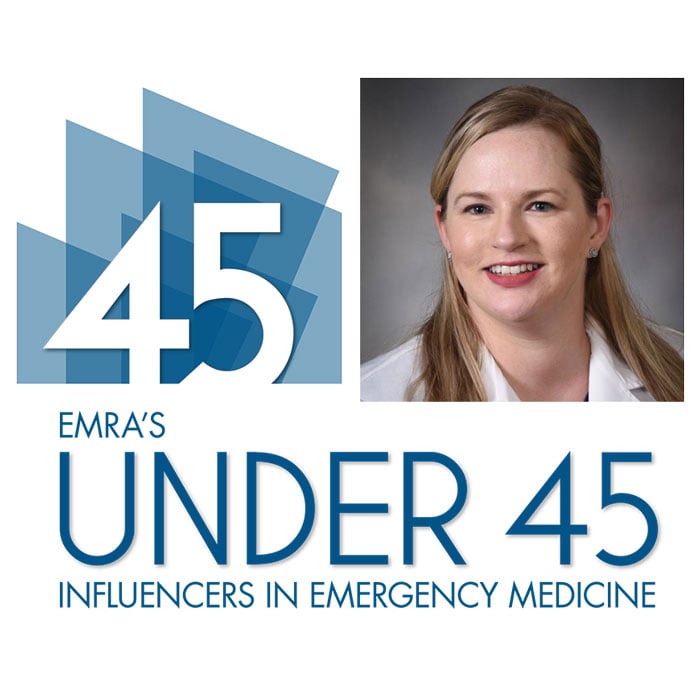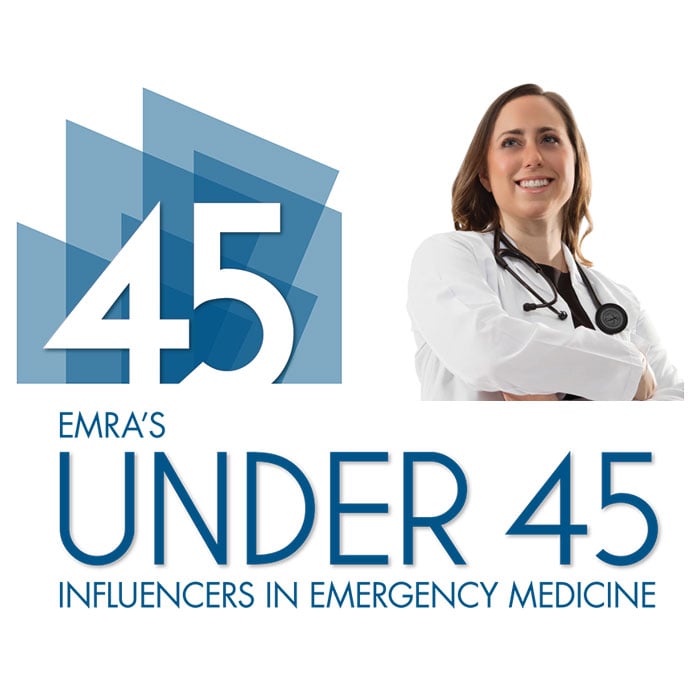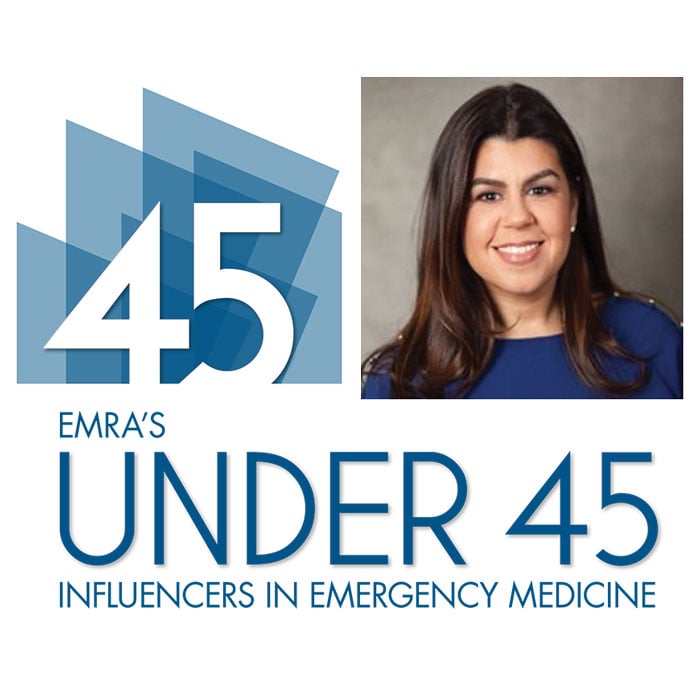Can Chameleons Change Their Colors?
Lenexa Morais, Chair of TCEP Medical School Committee, UTMB Class of 2021
It’s 02:30 in the UTMB Emergency Department in Galveston, TX and I’m currently googling if a chameleon can change its color to sky blue, all in the name of compassionate care.
Many are aware of the stereotype that can color emergency medicine: quick in, quick out, discharge without a doubt. As a medical student, I never questioned this perception. In theory, the faster we see patients, the more we could treat; therefore the more we could help. Yet, there are obvious flaws with this belief, we know that quantity does not ensure quality. Now that I am a third year medical student, I am trying to find my role within the team. The University of Texas Medical Branch (UTMB) in Galveston does not have an EM residency program, thus medical students have the opportunity to take on significant responsibility. I have realized that there is plenty of opportunity for us to focus on delivering compassionate care without slowing down the EM process.
At 01:47, nine-year old Jenny is admitted to the ED for a rather obvious closed Colles’ fracture of the right wrist, vitals are stable. She lays on the bed in her mother’s arms as her father and two sisters in their pjs try to fit into the tiny room. I introduce myself to them and complete my patient history. It’s time for the physical exam and Jenny is as wary as I am. She is tearful, in obvious pain, as I ask her permission. She refuses. For a moment, I stand there at a loss, a little unsure what to do.
At our school, students are offered a variety of optional scholarly tracks to supplement our medical education. One of these programs is the Physician Healer Track, designed to teach students how to care for themselves and how to bridge the gaps in care for patients. We learn how to break bad news, listen empathetically, and be with patients in their suffering amongst many other lessons. From discussing with my classmates, I realized that there is a belief that these kinds of tasks are assumed to be too time consuming to be implemented effectively in fast-paced settings such as the ED. Research shows that the major barriers to compassion in the ED are a distracting work environment, managing a difficult patient, and dealing with a clinically complex situation that makes one more analytical and less caring. While this holds truth, that does not mean that our specialty is devoid of feeling or care.
It’s 02:15, I’m back in the room after asking my attending to order a round pain meds, an x-ray, and an ortho consult. Jenny’s tears have dried, but could spring up at any moment. I ask for permission once again and am met with resistance. I feel less terrified that I will hurt her so I decide that I must figure out a game plan. I notice her Rapunzel pjs and launch into a Disney spiel, asking her rapid fire questions about her favorite character, what kind of castle would she live in, and if she would consider getting a chameleon as a pet (Disney movie reference). It seems to distract her enough that I can gingerly assess her range of motion and sensation. She is no longer fearful, but actively engaged, soliciting my opinion on whether chameleons can become hot pink or sky blue to match her shirt. I tell her I have to look it up. I notice that she’s cold, so I go to bring her a warm blanket. She asks if I can bring a few more so we could use them to build a fort in the room. I think that the pain meds must really be working well. On the way, I scavenge the ED for extra chairs for the rest of the family, who wish to remain in the room with her.
Emergency medicine is a field unique to the medical cases and people who respond to them. We come away with many wild stories and memories that can make an impression on us and shift our way of thinking. Sometimes I think about those patients, and if they ever remember us as they went through their ordeal. Did they think we were helpful, hurtful, or indifferent to their needs? Did they think that we acted compassionately even though we only spent ten minutes in their room before we were called away to a trauma? How do we incorporate meaningful interaction in such a brief encounter?
It’s 02:40, I’m in the room with two second year ortho residents about to watch them perform a hematoma block, since Jenny ate a big meal before coming in. She’s seen the needle and is screaming in an octave that is blowing out our eardrums. They’ve called a nurse and are getting ready to hold her down. The room is tense, I see the fear in her eyes and her family’s distress. I peel off the wall in the corner and put myself in her line of vision. I say the first thing that comes to mind, “Jenny, did you know that chameleons can change their color to pink and blue, even a magenta?” For a moment, the residents look at me like I need a psych consult. But the screaming has faltered, so I continue on with my nonsensical facts until I’m sitting on the bed with her holding her hand. She’s stopped now and I’m still talking as the residents resume their position.
I recently sat down to interview Dr. Brent Vasut, Best Doctor in Galveston 2017, and my mentor, Dr. Kristen Robertson, who was named Best Doctor in Galveston 2018. When asked how they approach compassionate care in EM, they say that it is best to respect the wishes of the patient and family. Patient autonomy is important, but so is educating the patient on the seriousness of their condition. They recommend that medical students can play a significant role in patient care by being attentive to the patient’s needs- bringing them water or a blanket, stopping by to inform them of updates, listening attentively and not interrupting, or even asking who they have accompanying them in the room so that everyone feels included in the care.
It’s 02:58, Jenny is medicated and the needle is poised, but she is still nervous and squirming. The residents tell her that they will hold her down if she moves too much. She asks if it will hurt and they tell her she will feel a pinch. She is skeptical and we all watch as she begins to work herself up again. I push my UTMB jacket sleeve up and tell Jenny to reach out and pinch my arm. She’s confused, but trusts me enough to do as I ask. I tell her to keep her eyes on mine and to keep her hand on my arm and to pinch as hard as she can when she feels the needle, but not to pull away. The residents take that as their cue and as she feels the pressure of the needle, I feel the corresponding pinch. Her eyes are glued to my face and she’s matching my breathing. She has quite a grip, but the pain is insignificant. My entire focus is on keeping her calm and still. I tell her when it’s over she can paint her cast blue.
I ask Dr. Robertson and Dr. Vasut how they handle difficult patients and maintain empathy. They recommend taking a step back to remember that you are treating the patient not the personality. Compassion fatigue is an unfortunate side effect of the profession that affects healthcare providers and involves the physical, emotional, and mental exhaustion of caring for others. Nearly 60% of ED physicians across the globe report experiencing burnout in their career. I ask my doctors how they recharge for optimal patient care and they cite spending time with family, traveling, giving back to the community, sleeping, shopping, and working out as their favorites. The best advice that they received while in training was to ask for help when they needed it and to maintain strong communication within the ED team and the admitting team.
It’s 03:45, Jenny has her cast on and is ready to go. On the back of the discharge papers, I quickly doodle a picture of a chameleon for her and color it in with my blue highlighter. It’s not my best work; I wish I had my watercolor paint, but it’s 4am and it will do. When I give to her, she gives me the best one-armed hug I’ve ever had the privilege of receiving.
I ask my attendings what traits do they look for in a resident interviewing for a faculty position. They seek those with a strong work ethic, someone who they can get along with during a long shift, someone who understands the importance of teamwork and communication, and someone they can trust as they are handing off patients. They say that as medical students, we can learn these skills early on to help us integrate into the team.
As a student, I am looking forward to learning more about medicine and developing not only my medical skills, but also my people skills. It is my belief that patients will always remember a trip to the ED, so it’s my personal goal to make sure it’s as minimally traumatic as possible. I believe it is a privilege to be trusted by a patient when they are at their most vulnerable. At the end of the day, I aim to be as compassionate as my mentors and as adaptable as a chameleon.
Thank you to Dr. Kristen Robertson and Dr. Brent Vasut for their mentorship and contribution to this article. Patient names and details have been changed for patient privacy.
Citation: Hamilton, S., Tran, V., and Jamieson, J. ( 2016) Compassion fatigue in emergency medicine: The cost of caring. Emergency Medicine Australasia, 28: 100– 103. doi: 10.1111/1742-6723.12533.
Related Content

Aug 31, 2019
Nicole Battaglioli, MD, FAWM
As outgoing ALiEM Wellness Think Tank COO, Nicole Battaglioli has devoted considerable time and brainpower to defining and improving resident wellness. Along with being an Assistant Professor of Emergency Medicine, Dr. Battaglioli is the CEO/founder of Komorebi Coaching, lover of wilderness medicine, and promoter of super-sheroes.






